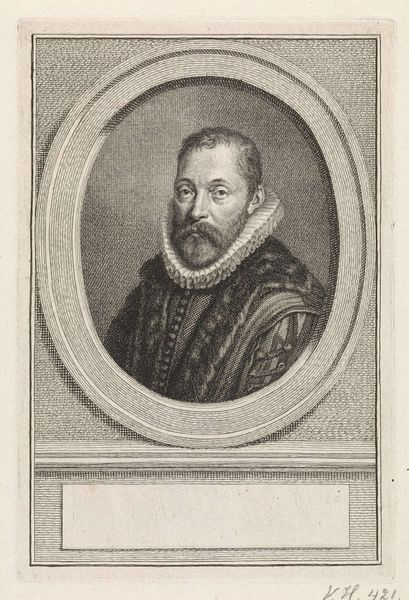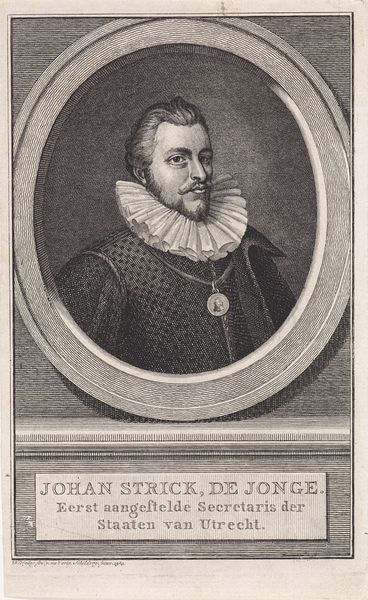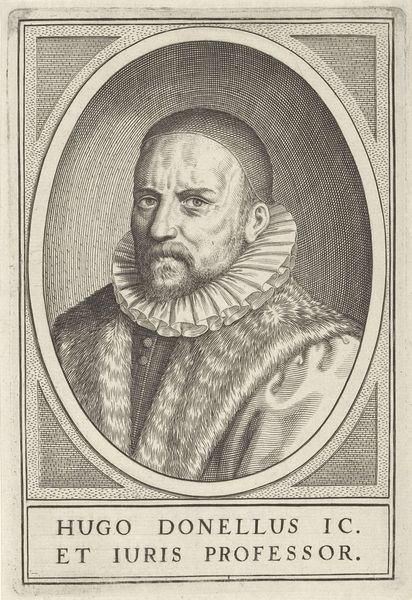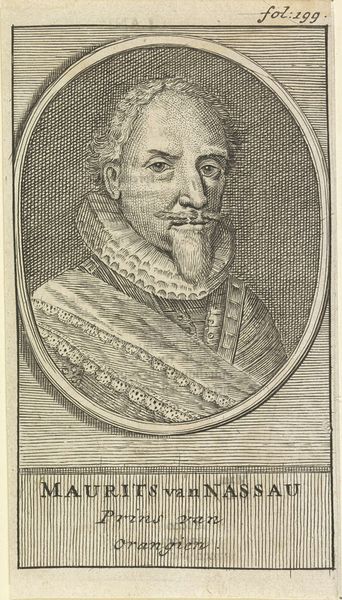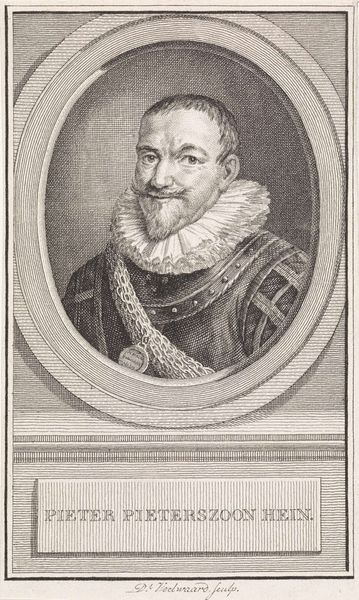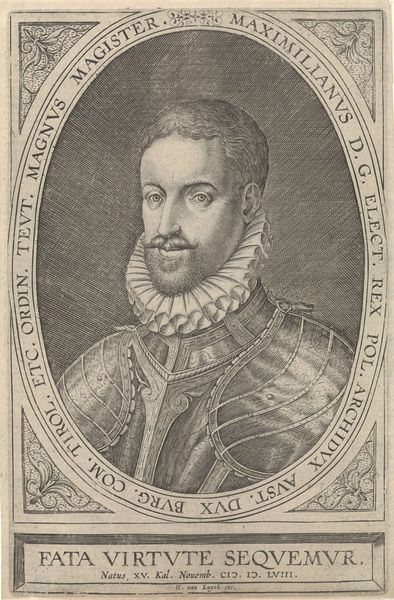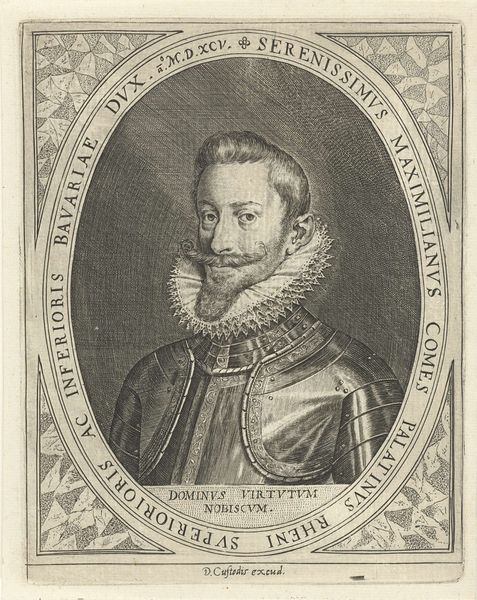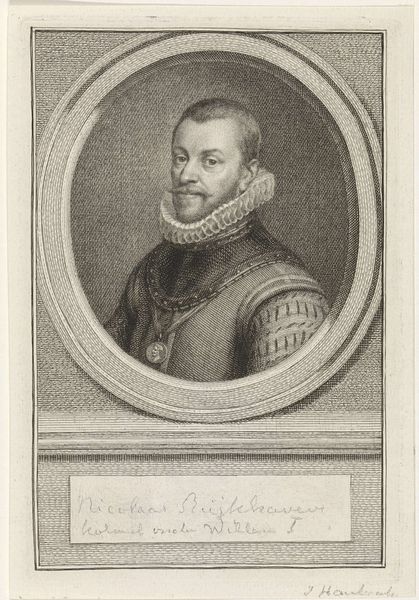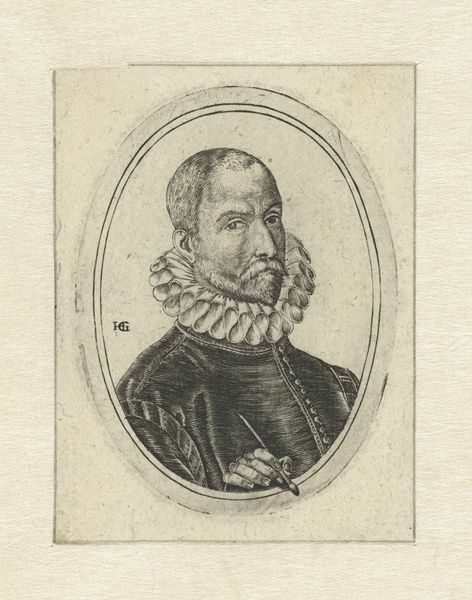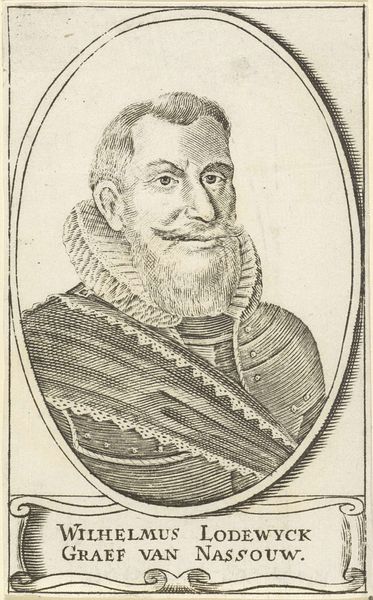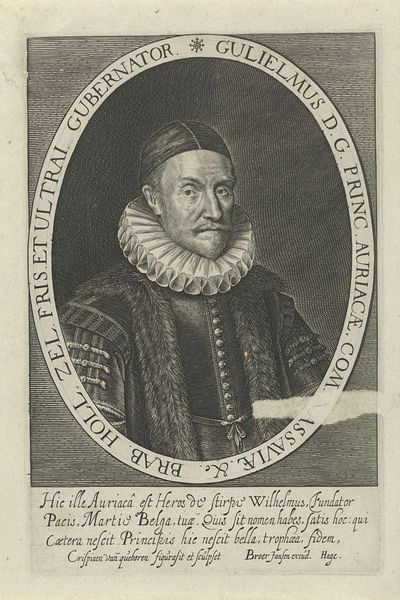
Portret van de gouverneur-generaal Jan Pietersz. Coen 1776 - 1851
0:00
0:00
Dimensions: height 106 mm, width 63 mm
Copyright: Rijks Museum: Open Domain
Daniël Veelwaard made this portrait of Jan Pietersz. Coen using etching, sometime between the late 18th and early 19th centuries. It's a depiction of a controversial figure from the Dutch Golden Age: Coen, the Governor-General of the Dutch East Indies. The image presents him as a figure of authority, framed within an oval, suggesting importance and timelessness, with his name emblazoned below. The style evokes the 17th century, when Coen was alive. The Dutch East India Company was a powerful institution, and Coen was central to establishing their dominance in the spice trade. His actions, particularly in the Banda Islands, involved violence and forced displacement. This portrait, created long after his death, speaks to how the Dutch, at the time, remembered their colonial past. Was Coen a hero or a ruthless administrator? Understanding this image means researching the history of Dutch colonialism, the role of the Dutch East India Company, and the changing attitudes toward colonialism over time. These contextual elements help us interpret the portrait’s enduring significance.
Comments
No comments
Be the first to comment and join the conversation on the ultimate creative platform.
